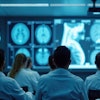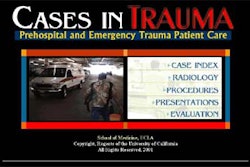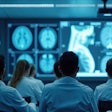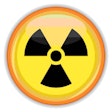Radiology is a diverse profession with a variety of different specialties. It is essential in every healthcare facility where patients come for treatment. Advances in computer technology have vastly improved the field, but have also increased the amount of knowledge necessary to perform the job. While the amount of training required varies, all radiology professions require some advanced education.
Here’s a breakdown of career options in the medical imaging field, as well as some resources if you’d like to know more.
Radiology
Radiologists specialize in imaging the body and interpreting those images in order to diagnose a disease or to find an ailment. Procedures done by radiologists produce images that visualize bones, organs, and vessels of the body. This is done using a variety of imaging modalities, including x-ray, ultrasound, magnetic resonance imaging (MRI), CT (computerized tomography), and nuclear medicine. Diseases can be diagnosed earlier and with greater accuracy using imaging equipment. Radiologists are board-certified physicians who, in addition to studying four to five years of basic medicine, spend four years as a resident and another year at a fellowship, specializing in their chosen imaging field.
For more information on radiology, visit these Web sites:
American Board of Radiology
American Osteopathic College of Radiology
Radiological Society of North America
Radiologic sciences offer diverse career opportunities
Interventional Radiology
This specialty combines radiology with minimally invasive techniques that can obviate the need for surgery. Using imaging for guidance, interventional radiologists work to correct abnormalities in the vessels (blood and brain) of the body. An example of an interventional radiology procedure is the use of an angioplasty balloon to enlarge a vascular constriction by inflating the balloon in a narrowed portion of the vessel.
For more information on interventional radiology, visit these Web sites:
Dotter Interventional Institute
Society of Cardiovascular and Interventional Radiology
Mammography
This subspecialty uses x-rays to visualize breast tissue in order to detect any possible cancerous changes early. X-rays are taken of the breasts, and the images are produced on sensitive film. The American Medical Society recommends that a woman receive a mammogram every two years between the ages of 40 and 49 and on a yearly basis thereafter. With early detection, more than 90% of breast cancer cases can be successfully treated.
Radiologic Technology
Radiological technologists (RT) are professionals who operate medical imaging equipment, while radiologists read the images that are produced. RTs must not only become familiar with sophisticated techniques like CT, MRI, and digital subtraction angiography, but also with videotape and motion picture film as well.
Experienced technologists may also carry out more complex imaging procedures, such as fluoroscopy. This calls for radiographs to be taken during or shortly after a patient is infused with a liquid, usually containing barium, which provides images of different parts of the digestive tract. Chiefly employed by hospitals, employment for radiologic technologists is expected to grow 70% through 2005.
Certification is essential for work in this field. Graduates from accredited programs can take a four-hour exam administered by the American Registry of Radiological Technologists for certification. A list of accredited programs is available at the Web site of the Joint Review Committee on Education in Radiologic Technology (see below).
For more information on radiological technology, visit these Web sites:
American Registry of Radiologic Technologists
American Society of Radiologic Technologists
Bone densitometry provides a satisfying second career
Joint Review Committee on Education in Radiologic Technology
Radiation therapists and medical dosimetrists give people a second chance at life
Sonography
Sonographers work with scanners that transmit and receive high-frequency sound waves (ultrasound) to create images of soft tissues, vessels, and organs. Ultrasound is noninvasive and helps to identify and diagnose various problems. The sonographer runs an ultrasound probe over the patient and watches the scanner's monitor as it produces 2-D or 3-D images of internal organs, checking for differences between healthy and abnormal areas. The procedure uses no x-rays or radioactive materials. Moreover, the specialist records the images on a printout or videotape for interpretation by a doctor. Sonographers may specialize in cardiac, vascular, or abdominal areas, among others.
American Institute of Ultrasound in Medicine
American Registry of Diagnostic Medical Sonographers
Society of Diagnostic Medical Sonographers
Sonography: The art of images in sound
Nuclear medicine
Nuclear medicine focuses on the diagnosis and treatment of disease through the use of radioactive compounds. It is used to detect diseases of the brain, heart, liver, thyroid, and other organs. Nuclear medicine physicians are radiologists who specialize in interpreting these functional images.
Nuclear medicine technologists administer these compounds, whose unstable atoms emit radiation spontaneously, and then monitor their uptake in organs and tissues. The technologists are responsible for preparing the correct dosage of the compounds, called radiopharmaceuticals, and may administer them by mouth, injection or other means. Additional duties include proper disposal of radioactive drugs.
In a formal program of studies, courses include statistics, instrumentation, biochemistry, immunology, radionuclide chemistry, radiopharmacy administration, computer application and operation, and other areas. There are three programs of training in this field: certificate programs, which are one-year programs designed for health professionals seeking to change careers; associate degree programs, which are two-year programs offered by community colleges; and bachelor’s degree programs, which are four-year programs offered by colleges and universities.
For more information on nuclear medicine, visit these Web sites:
American Board of Nuclear Medicine
American College of Nuclear Physicians
Joint Review Committee on Educational Programs in Nuclear Medicine Technology
Nuclear medicine is changing the course of the medical world
Physics
The main responsibility of a medical physicist is to monitor the use of radiation. Quality assurance, dosimetry, machine acceptance testing, and data collection for clinical use and treatment planning systems are part of a physicist's job description. Physicists in an academic setting will also study ways to improve imaging equipment and methodology.
For more information on medical physics, visit these Web sites:
American College of Medical PhysicsInternational Organization for Medical Physics
Radiological nursing
The radiologic nurse’s chief responsibility is helping patients before, during, and after procedures. Prior to any treatment, the nurse assesses the patient, provides necessary instructions, and answers any questions the patient may have.
During the procedure, the radiology nurse monitors respiration, intravenous sedation, and handles other noninvasive tasks. Once the procedure is complete, the nurse is often responsible for discharging the patient, either to a hospital ward or to the patient’s home. Radiologic nurses also serve as patient advocates, acting as links between patient, physician, radiologist, and technologist.
Radiology nurses must be certified as registered nurses. Many have backgrounds in an intensive care unit or emergency room. They may earn their RN certification in a two-year or four-year program, and have the option of seeking certification with the American Radiological Nurses Association. After completing three years of radiological nursing experience and upon passing the ARNA exam, nurses earn the CRN credential.
For more information on radiological nursing:
American Radiological Nurses Association
Medical school
Your choice of medical schools is obviously up to you. But there are several general medical Web sites that offer information and advice on careers in radiology.
For more information on medical schools, visit these Web sites:
Mallinckrodt
Institute of Radiology
AuntMinnie.com contributing writer
June 2001
Copyright © 2018 AuntMinnie.com



















